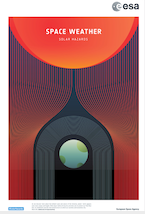Speaker
Description
The Mullard Space Science Laboratory (MSSL) has strong heritage with plasma instrumentation delivering capable instruments for a range of missions including for magnetospheric missions (Cluster, Double Star), planetary environments (Cassini) and cometary studies (Giotto). These activities are backed up with a strong instrument development programme and state of the art test and calibration facilities. A particular focus of the current development activities is instrument miniaturisation with the aim of realising low-resource, multi-functional sensor systems. A brief description of the sensors follows.
Building on the laboratory’s heritage with top-hat type analysers, the Improved Plasma Analyser (IPA) has been developed with the addition of an electrostatic deflector plate system to scan the field of view to cover ±45º and a variable geometric factor system to vary the instrument geometric factor by up to an order of magnitude, providing significantly enhanced performance over conventional top-hat systems. The analyser provides the baseline design for the Electron Analyser System (EAS) of the Solar Wind Analyser (SWA) package on ESA’s Solar Orbiter mission. The instrument has been delivered to the spacecraft prime and launch is currently scheduled for February 2020. Also, the EAS provides the baseline subsystems for ESA’s L5 mission study currently in progress.
To realise highly integrated and miniaturised sensor systems, a number of analyser geometries and fabrication techniques are being studied. Based on results from these, the Charged Particle Spectrometer (ChaPS), was developed and launched on the UK’s TechDemoSat mission. ChaPS provided an in-flight demonstration of a novel analyser geometry combining low energy electron and ion analysis. The instrument design was tailored for a number of different goals, measurement of electrons in the Earth’s auroral regions, cold (< 60eV) ions in low Earth orbit and spacecraft charging, with sensor performance and operational modes optimised for each of the goals. Based on the ChaPS design, a low resource Hot Plasma Environment Monitor (HoPE-M) is being developed under ESA contract for satellites in Geostationary Orbits.
Finally, an Ion and Neutral Mass Spectrometer (INMS), designed for sampling of low mass ionised and neutral particles in the spacecraft ram direction, was developed for the EU QB50 CubeSat constellation mission. 9 INMS instrument were launched on their respective educational CubeSats and to date, data has been returned for a one month period from the one working QB50 CubeSat. Two further sensors are due to be launched in January 2020 on the CIRCE mission. Subsequently, an enhanced performance INMS is being developed for the Satellite for Aerodynamic Research (SOAR). a CubeSat being developed for the H2020 DISCOVERER project, currently scheduled for launch in 2020. The instrument is a gated time-of-flight and will add a velocity measurement capability to the INMS.
This paper will present an overview of the development programme, details of some of the missions and the corresponding sensors under development for them, the current status of the developments and a roadmap of the programme vision. Preliminary in-flight results from the QB50 INMS will also be presented and discussed.

